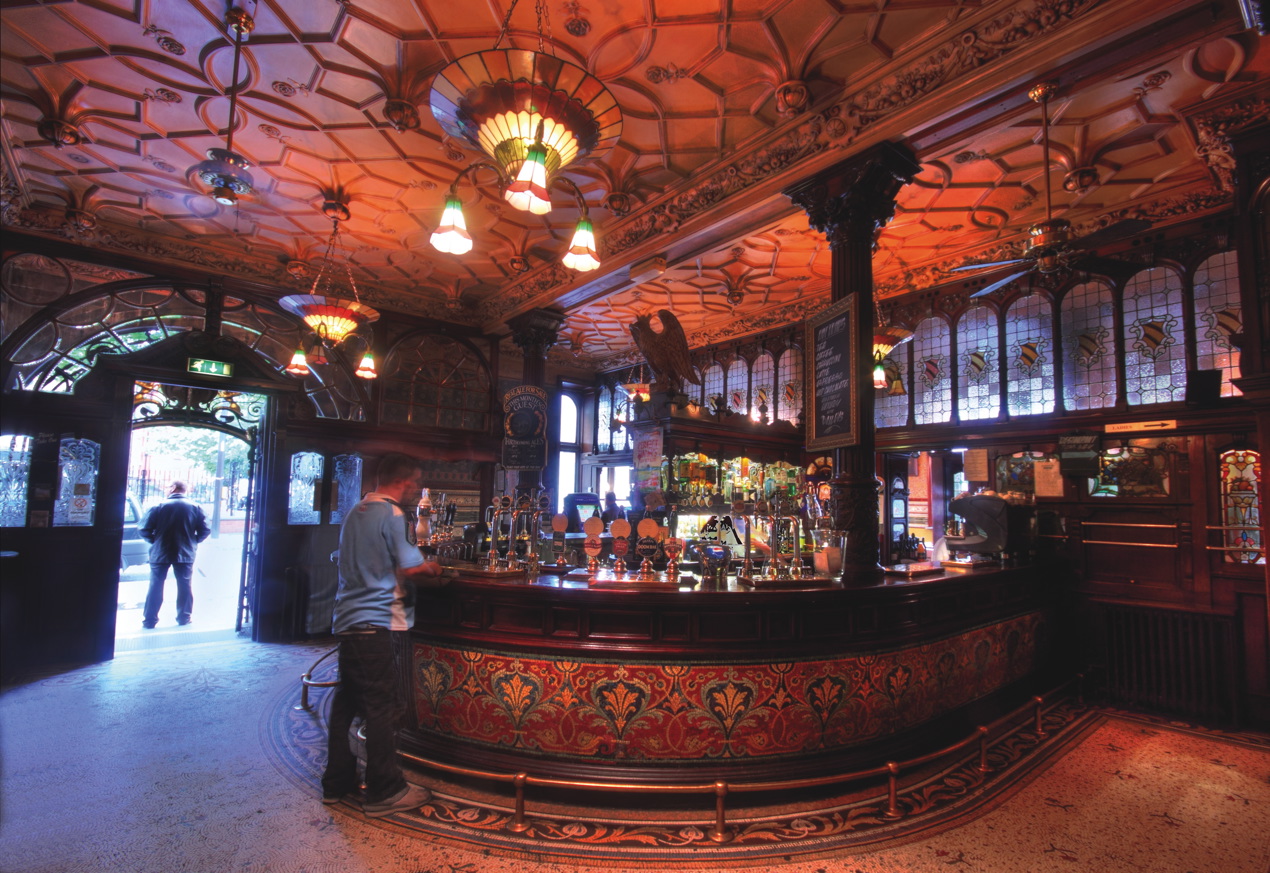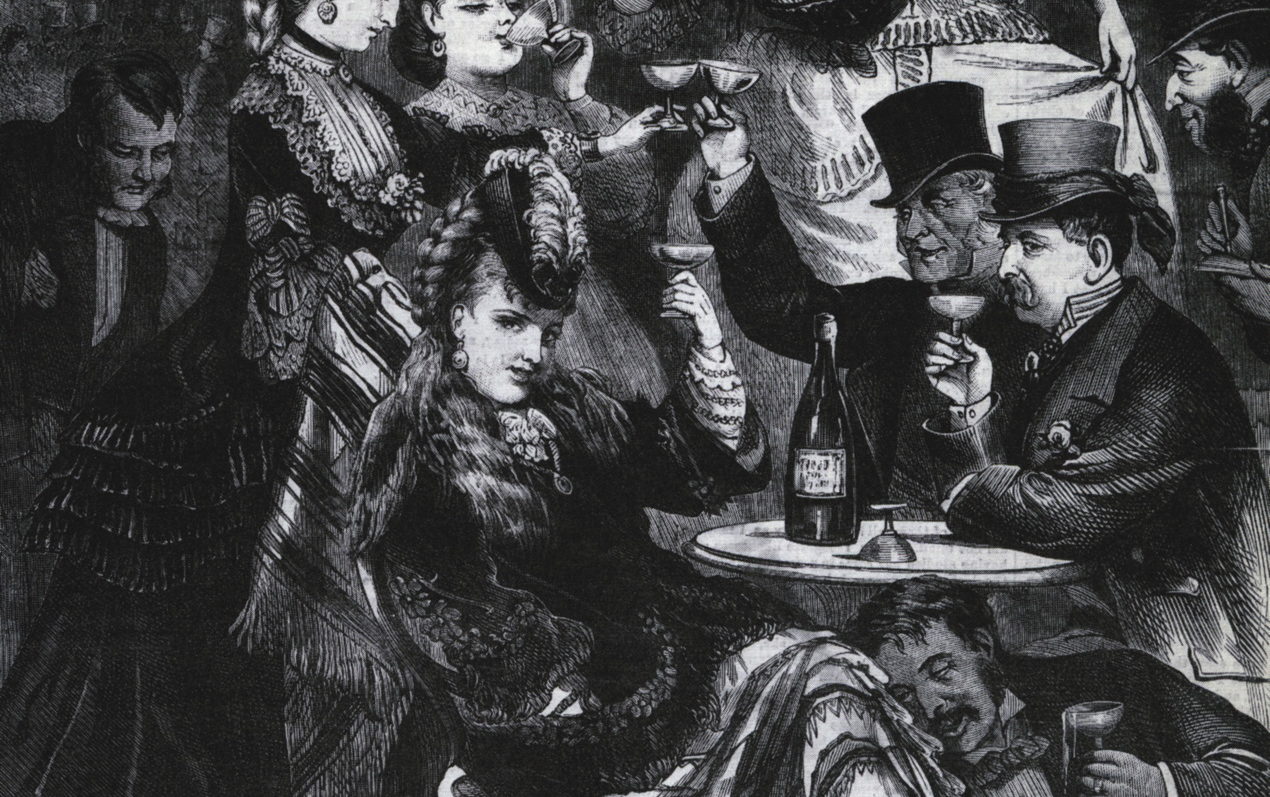We are amused
The Victorians are characterised as dour and puritanical but, with everything from gin palaces to parachuting monkeys, they knew how to have a good time
Queen Victoria’s favourite phrase was, reportedly, “we are not amused” and many of us have our own photos of our hatchet-faced great-great-grandparents. The Victorians, however, were not miserable puritans. They not only contributed to sober schemes for what was called “rational recreation” – public parks, libraries and museums – but they also invented innumerable ways to simply have fun.
A likely contender for first music hall is Thomas Sharples’ Star Theatre and Museum in Bolton
The beginnings of the 19th century’s mass entertainment boom date back to the 1830s, when the humble public house was increasingly converted into a more commercial gin palace. This was essentially the beginnings of the modern pub. Fusty old taverns gave way to custom-built gin shops, full of gilding and gaslight. These palaces were a new type of business: they did not give credit, nor did they provide traditional extras like tobacco or newspapers, nor much in the way of seating. The idea was simply to order a quick dram, and then perhaps another, at a broad pewter-topped counter, backed by vast barrels of branded gin – the likes of Old Tom and Cream of the Valley.
Beer was still available but was now on tap, thanks to the new beer engine, which conveniently also did away with old-fashioned and expensive waiter service. Temperance campaigners complained that the poor and, worst of all, decent working-class females and servants, were being lured into this new alluring breed of public house. It was reported to a government select committee that the sparkling “spirit vaults” of industrial Stockport, for example, were attracting troops of women from the local factories who “would have been ashamed of it some years ago”. But the complaints of moralists did little to dent landlords’ profits, and some even expanded their new premises to include entertainment for their customers. This ultimately led to the great leisure innovation of the 19th century: the music hall.
The growth of the music hall was something of an evolutionary process. First, landlords turned amateur pub singalongs into a sort of commercialised cabaret. When this proved profitable, they built ever more elaborate pub concert rooms to hold such events. The popularity of these venues, or music halls, ultimately led to the construction of magnificent theatres – “palaces of variety”. Charles Morton’s Canterbury Hall in Lambeth, which opened in 1854, is often cited as the first music hall but that is largely a testament to Morton’s public relations skills. A more likely contender might be Thomas Sharples’s Star Theatre and Museum, which opened in Bolton in 1840. The Star’s origins were typical: a popular singalong night in a public house, commercialised by the landlord. Sharples expanded his pub, building an adjacent auditorium reportedly capable of holding 1,000-1,500 patrons. He also added, for good measure, a waxwork exhibition and a menagerie. Details of Sharples’ programmes from the 1840s reveal an eclectic mix of entertainment: a “Characteristic Yorkshire Dialect Singer”; assorted acrobats and jugglers; ventriloquists and magicians; even public readings from the works of Dickens – anything to attract the public.
Some entrepreneurs added dancing to the mix. Thomas Youdan’s Surrey Music Hall in Sheffield, which opened in 1856, not only included a theatre space for music hall acts, a museum and menagerie, but a formal ballroom that could hold 50 or 60 couples. Dances in function rooms above pubs, even of the cheapest sort, were also very popular. Magistrates in Preston complained that “it was quite time that something was done to put a stop to quadrille dancing at low beer houses”. The Golden Ball Tavern in Lancaster, an inland port, was famous for its weekly twopenny hop, which was frequented by both sailors and young girls who worked in the nearby mills. The Ship Inn in Hull gained brief notoriety after a fight at a dance between two local prostitutes, nicknamed Pablo and Cottingham Poll.
Publicans, however, could never really profit from dance in a big way precisely because of their clientele getting into such scrapes. Local licensing magistrates generally saw public house dances as “a nursery of folly and prostitution” and frequently closed them down.
The owners of pleasure gardens – private parks offering a range of lively entertainments – fared somewhat better. Manchester’s Belle Vue Gardens employed three brass bands on public holidays to ensure uninterrupted music for customers on its 15,000 square feet sprung dancing platform.
Pleasure gardens also accommodated all sorts of fairground fun, circus acts, firework displays and ballooning. During the Crimean War, for example, Manchester’s rival Belle Vue and Pomona Gardens both staged diorama recreations of the Siege of Sebastopol, accompanied by elaborate pyrotechnics. Ballooning was also a favourite spectacle with the public, although one that involved risks. The demise of James Goulston, aka Signor Giuseppe Lunardini, on the Oldham moors in 1852 was avidly reported by a bloodthirsty popular press (“a quantity of blood and brains on the wall… another sickening splash of blood”). Goulston was actually a London factory owner who travelled the country in his spare time as an amateur daredevil “aeronaut”.

Some of Goulston’s contemporaries, in order to stand out from the crowd, were accompanied by animal companions. Residents of West London grew accustomed to regular ascents of Charles Green and “Signor Jacopo, The Celebrated Monkey”, launched into the ether from pleasure gardens in Chelsea and Lambeth. The monkey was then dropped from Green’s balloon in a wicker container, with parachute attached, accompanied by a note that offered £2 reward to the finder, and free admission to the Surrey Zoological Gardens.
Pleasure gardens were also popular beside the sea, from Blackpool’s Raikes Hall to Southend’s Marine Park. But, of course, there was a good deal more to the Victorian seaside. Blackpool started the century with only a few dozen houses, offering lodgings for middle-class families interested in fresh air and sea bathing. The coming of the railways and the increasing wages and leisure time available to Lancashire mill workers in the 1870s saw Blackpool become a boom town for working-class tourism. Various new entertainment institutions appeared by the sea at burgeoning resorts, from ironwork piers – and their vertical analogue, the Blackpool Tower – to conservatory-style concert and dance halls (the Winter Gardens), aquariums, and even, during the 1870s and 1880s, roller-skating rinks. By the start of the Edwardian era these were supplemented by mechanised theme park thrill rides, from roller-coasters to log flumes, which, of course, still amuse the public to this day.
Why, then, do we think of the Victorians as dour and puritanical? There were, admittedly, temperance societies and vigilance associations who wanted to police and regulate the pleasures of the poor, but it would be a mistake to see Victorians’ attitudes as identical with the Sunday School teachings of the devoutly religious, who were often dismissed as cranks. Not everyone was terribly interested in rational recreation, and the religious did not always have it their own way. The Salvation Army, which bought up and closed down the Eagle Tavern pleasure garden in London as a publicity stunt, was swiftly assailed by a “Skeleton Army” of angry locals, whipped up by local publicans.
We are also, perhaps, too influenced in our estimate of the Victorians by the black and white photograph – the formality of studio portraiture where it was customary not to grin – and the inevitable silence of the 19th century. We actually have films of the Victorians having fun, but they were made before technology could record the shrieks of a bank holiday crowd at the seaside or funfair.
As for Queen Victoria, was she amused? Her own niece, Princess Alice, had the cheek to ask her about her famous quotation. Queen Victoria answered that she “never said it”.
Palaces of Pleasure: From Music Halls to the Seaside to Football, How the Victorians Invented Mass Entertainment by Lee Jackson is out now (Yale University Press, £20)

Leave a reply
Your email address will not be published.